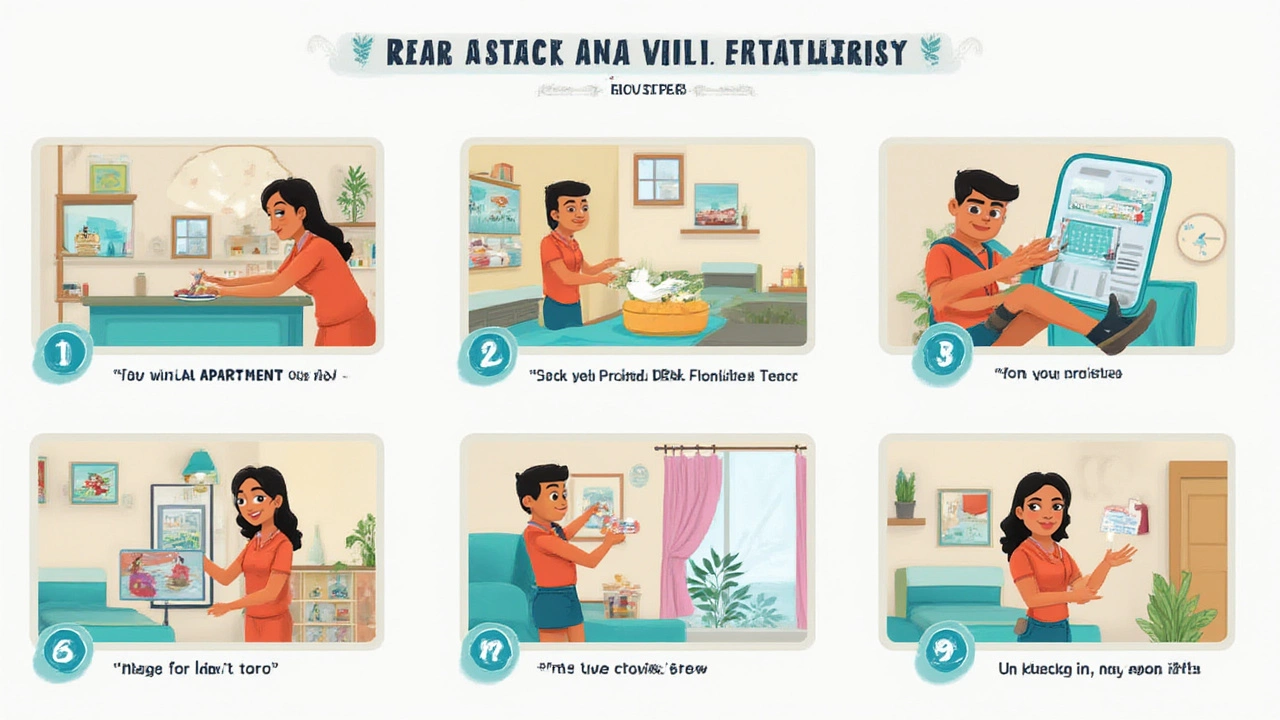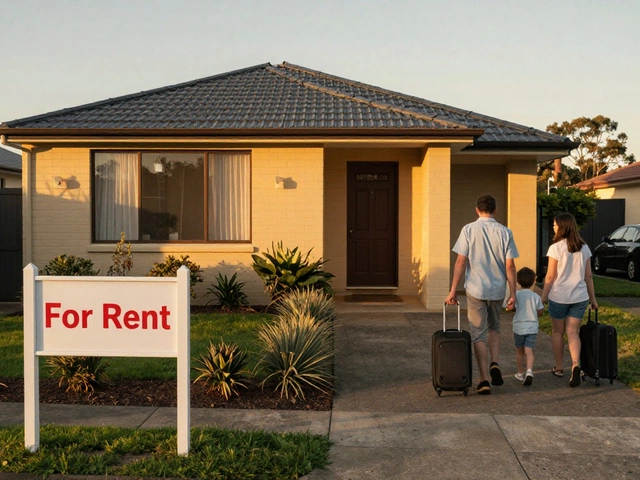It might sound wild, but about 44 million people in the USA rent their homes—more than the whole population of Australia. That’s nearly a third of all households. Ironically, it’s also one of the most confusing countries in the world to actually rent an apartment. Each state, even each city, has its own rules and quirks. Some cities have fierce competition, impossible application fees, or bizarre credit requirements. But don’t sweat it—if you know the process, have your documents ready, and know how to spot a scam, you’ll have your American apartment keys before you know it.
The American Apartment Hunt: Where to Start and What to Watch
First things first, U.S. cities each have their own personality. Cities like New York and San Francisco? You have to be quick, aggressive, and ready to pounce. Chicago or Houston? There’s a bit more breathing room, but you still need to move fast when the right place comes up. Many renters use sites like Zillow, Apartments.com, or Craigslist. For high-demand places—think Boston’s student market, or LA’s beach neighborhoods—it’s smart to turn on notifications and jump on new listings instantly. Some U.S. apartments never even hit the websites; locals go through real estate agents, bulletin boards, or word of mouth. So if you have friends or colleagues already in the area, ask around—the best apartments never go public.
If you’re an international renter, things get even trickier. Most U.S. landlords want to see a U.S. credit history (yep, that oddball American FICO score), proof you can pay rent, and a background check. If you’re moving from overseas, expect a few extra steps. In some places, landlords may ask for a higher deposit, or even six months’ rent upfront to feel comfortable—especially if you can’t show a credit history. Also, don’t be surprised by weird requirements unique to some cities: In New York, you sometimes need to prove you make 40 times the monthly rent (no joke—if rent is $3,000, you need to show $120,000 of annual income). In other places, it’s about criminal background checks, pet policies, or paperwork on student visas.
Your search should always include questions about utilities, as some places include them and others don’t. Heating and air conditioning can cost a bomb, especially in places with extreme weather. The U.S. is huge—climate, cost, and lifestyle are totally different between Miami, Seattle, Minneapolis, and San Diego. One practical tip: Use Google Street View before you book a physical tour. You’d be surprised how many dreamy listings are in the middle of dodgy neighborhoods, or have a train screeching overhead. If you’re planning a move-in sight unseen, ask for a live video tour, or recruit a local friend to go check it out. Scams, especially on Craigslist and Facebook Marketplace, are everywhere. Watch out for listings with prices that seem far too good, landlords who refuse in-person tours, or anyone who pressures you to wire money upfront. A good rule: If it seems too good to be true, it almost always is.

Application Process, Paperwork, and Money: Getting Approved
Once you find your dream spot, brace yourself for the paperwork avalanche. U.S. landlords can ask for a surprising stack of documents, and things move fast—remember, someone else could put in an application for the same apartment while you’re still hunting for your last tax return.
Here’s what most will want to see:
- Proof of income (recent pay stubs, job offer letter, bank statements)
- ID (passport, driver’s license, or government-issued ID)
- Social Security Number (foreigners without one may be asked for extra documentation or a guarantor)
- Credit report (If you’re international, some landlords will check your country’s equivalent or accept proof of savings or employment)
- References (previous landlords, employers, sometimes even professors if you’re a student)
Expect to pay an application fee ($20–$100 per applicant is typical; in pricey cities it jumps higher). If your application goes through and you’re accepted, you’ll pay the security deposit (usually one month’s rent, but in places like California or New York it can be higher… up to two months if you’re a newcomer). There’s often also a first month’s rent due before you move in, and sometimes an additional pet deposit or amenities fee.
It’s a lot to juggle. Here’s a real stat that helps explain the grind: in 2024, the average rental vacancy rate in the U.S. dropped below 6% — the tightest it’s been since the 1980s, especially in urban centers. That means competition is fierce. Some landlords will choose the highest-quality applicant, some the first, some whoever offers more upfront. Don’t be afraid to negotiate—offering a longer-term lease or being flexible on move-in date can help your case.
If you don’t have a local credit history, ask if they’ll accept a “guarantor”—sometimes called a co-signer, this is someone (often a local family member, employer, or even a service like TheGuarantors) who promises to pay the rent if you can’t. Some apartments, especially the big companies in cities, have set policies on this—check their websites. More and more, companies are accepting international renters with big up-front deposits, but don’t be afraid to call and ask. The more proactive and transparent you are, the better. If you can show you’re organized and communicative, landlords are much more likely to work with you even if your documentation is non-standard.
Here’s an example of typical costs. Numbers are based on average national data in June 2025:
| Cost Type | Average U.S. Amount |
|---|---|
| Application Fee | $30–$75/person |
| Security Deposit | 1–2 months' rent |
| First Month's Rent | $1,300 (national median) |
| Pet Deposit | $200–$500 |
| Utilities (monthly) | $130–$320 |
One massive tip: Always get everything in writing. Do not rely on handshake deals or texts. U.S. lease agreements spell out your rights, responsibilities, and protection from dodgy landlords (most states have strict tenant protection laws). You’ll want a signed lease that clarifies the rent, term, deposit, refund policy, who pays which utilities, and what happens if something needs repair. Never move in until you have a signed copy—scammers are known to pull last-minute tricks if they sense you’re desperate. If the lease feels too hard to understand (the legalese can get nasty), don’t hesitate to ask for a plain English summary, or have a trusted American friend look it over.

Living the American Renter Life: What Surprises and What to Plan For
So you’ve survived hunting, paperwork, and the cash outlay. What does day-to-day living look like? One of the first shocks for newcomers: the sheer number of rules in some apartment buildings. Some places have strict quiet hours or even ban certain furniture (yep, waterbeds are outlawed in parts of California). Many buildings require renters’ insurance, which protects your stuff in case of fire, flood, or burglary—and some landlords won’t hand over the keys until you show proof. Luckily, you can get a policy for as little as $10/month online.
American apartments vary a ton in what’s included. Some buildings are “no-frills” (no elevator, no laundry, you haul your rubbish out yourself), while swish complexes have rooftop pools, gyms, and free events. Those perks, though, are rarely free—monthly “amenity fees” often sneak up on you. Maintenance in professionally managed buildings is usually quick, but with mom-and-pop owners, speed can vary. Always report issues in writing, no matter how friendly your landlord seems.
Wild fact: In the U.S., tenants can actually deduct some repairs from rent if the landlord drags their feet—amazing, but only legal in some states, and you’ve got to document everything. If your bathroom ceiling collapses and you have to pay a plumber out of pocket, save receipts and notify your landlord in writing before subtracting anything from rent. Standard repairs—leaky taps, heating issues, pests—are the landlord’s responsibility, not yours (unless you broke it outright). If a building isn’t up to code and the landlord ignores fixes, local governments often have hotlines you can call. Don’t let yourself get bullied into fixing serious stuff yourself.
Don’t forget the move-out rules. Unlike other countries, many U.S. rentals require “notice” to end your lease—typically 30 to 60 days. Clean the place top-to-toe, photograph every room, and do a proper walk-through with the landlord if possible. A 2023 survey found that over 25% of U.S. renters had money unfairly withheld from their deposit at least once; doing your own documentation helps you fight back if there’s a dispute. In some cities with strict rent control laws (like San Francisco or New York), try to hang onto a good lease, as turnover means rents skyrocket for the next tenant but you can often stay at below-market rates if you never move out.
The U.S. rental system is complicated, but once you get the hang of it, it’s navigable. Document everything, ask tons of questions, stay skeptical about deals that seem suspicious, and don’t be shy about negotiating for a better deal or more flexible terms if you have unique circumstances. With a bit of hustle, patience, and a thick skin against paperwork, you’ll find a spot to call home. No kangaroos in sight, but you will have pizza delivery at 2am and Super Bowl Sundays with new neighbors—the American renter experience is full of surprises.





